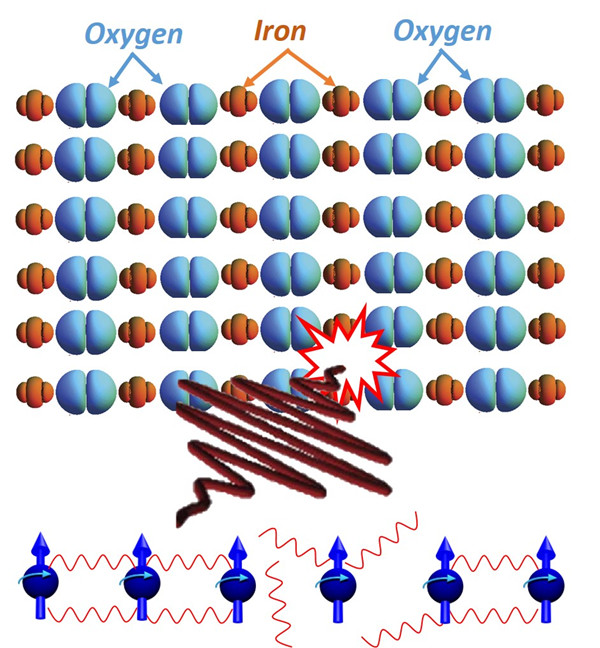Rare earth orthoferrites RFeO3 single crystals get progress—Ultrafast optical modification of exchange interactions
Magic of magnets is fascinating since ancient times, but yet until 100 years ago the theoretical understanding of magnetism remained very elusive. The breakthrough occurred with the development of quantum mechanics and the discovery of the fact that each electron has an intrinsic magnetic moment - spin. It was realized that the repulsion of two negatively charged electrons (the Coulomb interaction) depends on the mutual orientation of their spins. This spin-dependent Coulomb interaction started to be called exchange interaction. The exchange interaction between spins is the force which is responsible for alignment of all the spins in magnetic materials eventually leading to the fact that magnets possess large magnetic moment. A conventional way to destroy magnetic order is to increase the temperature of the magnet. However, magnetism is one of the strongest quantum mechanical phenomenon and the magnetic order is maintained well above room temperature. An international team led by the scientists from the Radboud University has discovered a conceptually new way to control magnetism without heating. Instead they suggest controlling the exchange interaction by steering motion of electrons in magnets by light. The exchange interaction is one the strongest quantum effects which is responsible for the existence of magnetic materials. The strength of the exchange interaction can be appreciated from the fact that many materials maintain their magnetic properties up to several hundred Celsius degrees.
Rare-earth orthoferrites RFeO3(R-Rare earth element) with perovskite structure have unique magnetic properties. A series of outstanding achievements about ultrafast opto-magnetism on Rare-earth orthoferrites crystals have been published at Nature, Physics Review Letter, etc. since 2004, incuding ultrafast laser-induced spin reorientation phase transition and its coherent control by a single laser pulse. Therefore, the crysatl growth of RFeO3 is an important demand in the field of magnetic optics and optical magnetism investigation. Wu Anhua and his group from Shanghai Institute of Ceramics, Chinese Academy of Sciences (SICCAS) first developed RFeO3 crystal growth with optical floating zone technology in China. They solved a series of key scientific and technical problems of synthesis of polycrystalline RFeO3 powder, seeded-growth of RFeO3 crystals with optical floating zone method, etc. They prepared the high quality rare earth orthoferrites single crystals with various compound, and the physical properties on the magnetic phase transition of RFeO3 crystals, such as: spin reorientation phase transition, spin compensation point etc., were sysmetically investigeted. Based on the orthoferrites single crystals and other iron oxides, the strength of the exchange interaction can be controlled by light through the cooperative investigation in an international team of scientists from the Netherlands, UK, Germany, China and Russia. Related research results have been published in Nature Communications, this paper is shown as:
http://www.nature.com/ncomms/2015/150916/ncomms9190/full/ncomms9190.html
The co-author of this paper and leading scientist Dr. A. V. Kimel says: “Free-electron laser FELIX in Nijmegen is exactly what we need to make the next step. Using this laser we can tune the wavelength of the radiation and find the conditions for the most efficient control of the exchange forces in magnets.” The scientists are convinced that their discovery is an excellent starting point for fundamental research and development of novel technologies based on optical control of magnetism.
This work is supported by the NSFC project, NSFC-NWO joint project, NSFC-RFBR joint project and Bureau of International Cooperation, CAS.

Figure. Artistic representation of the control of the exchange forces in iron oxides with the help of a femtosecond laser pulse



